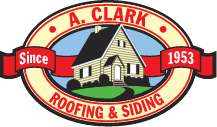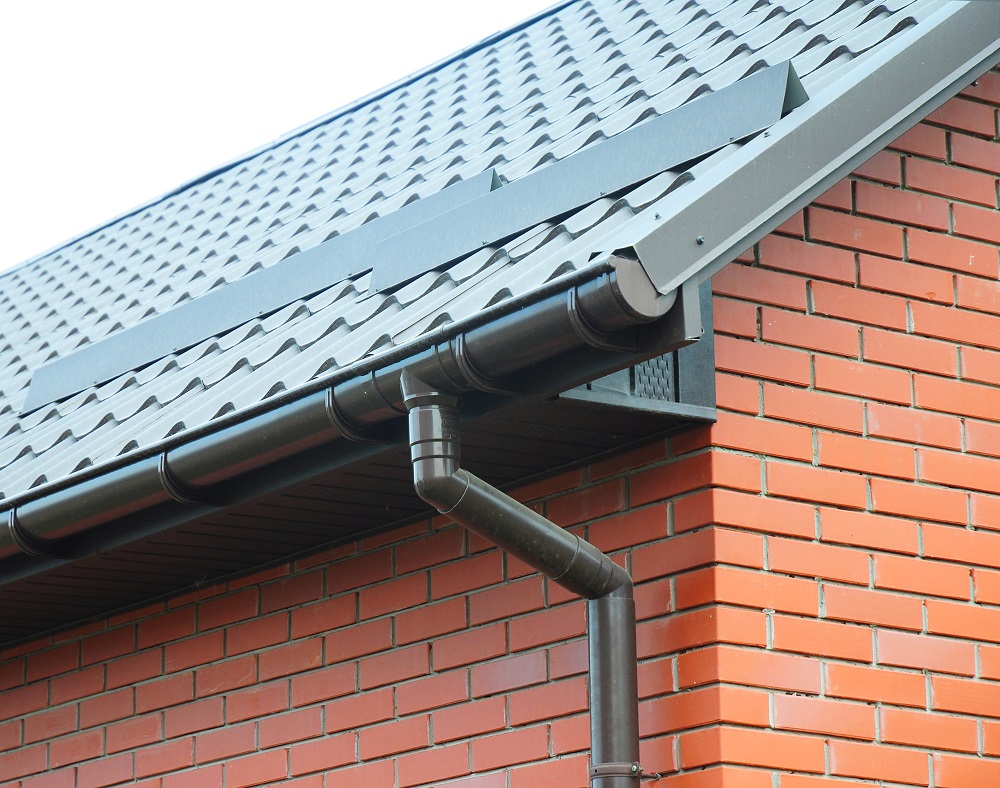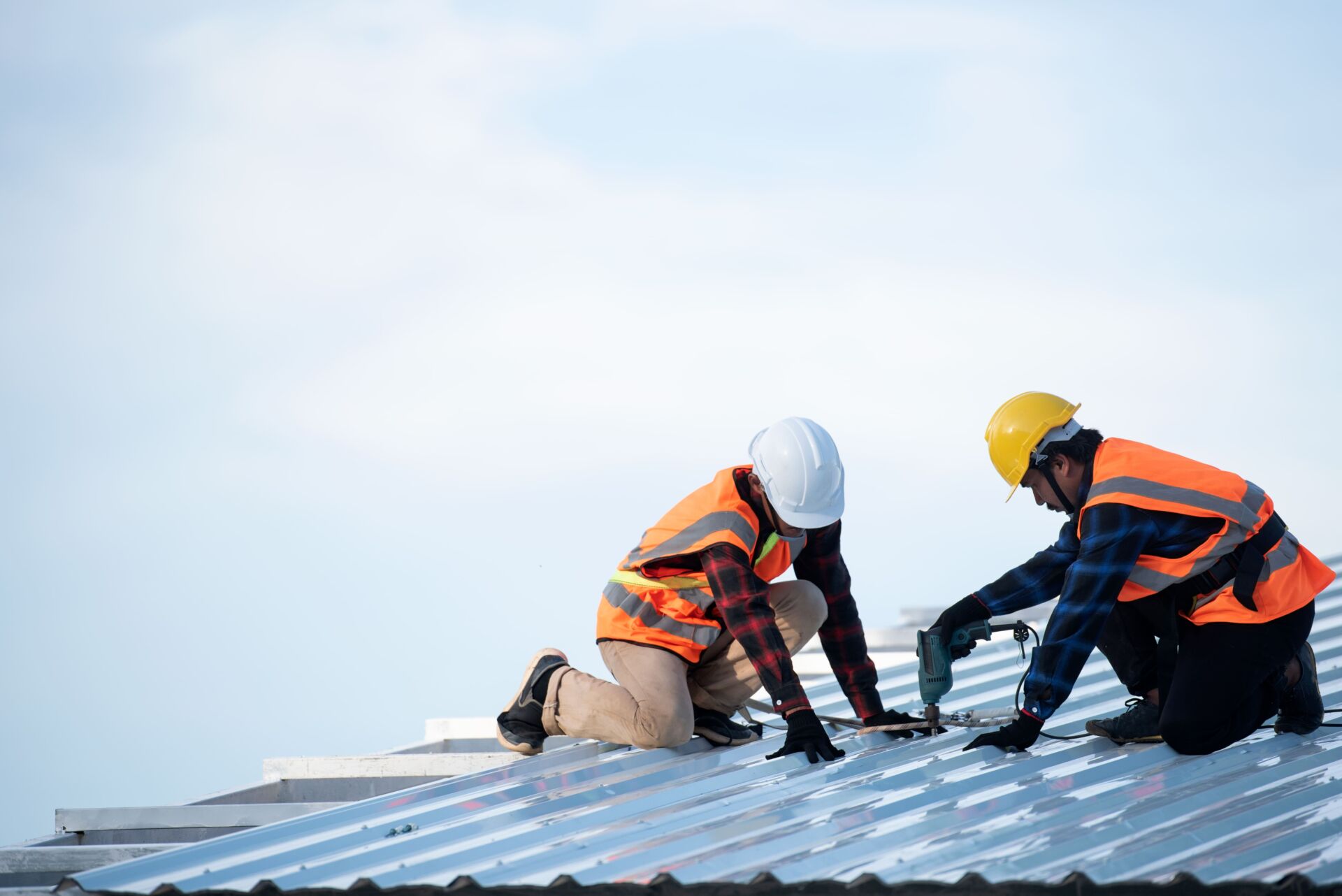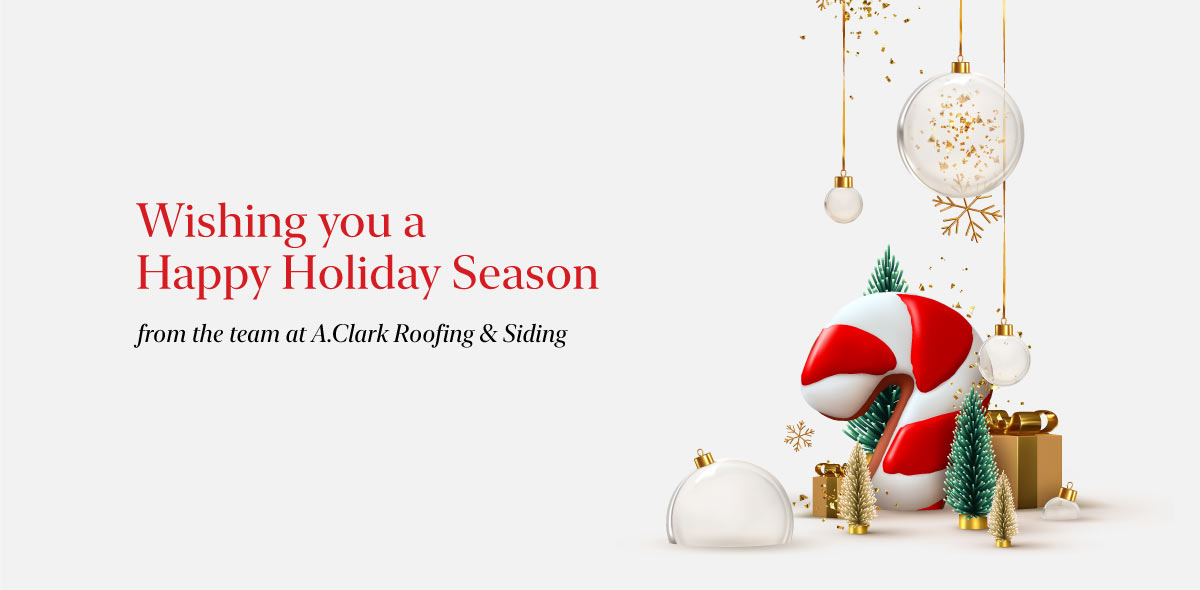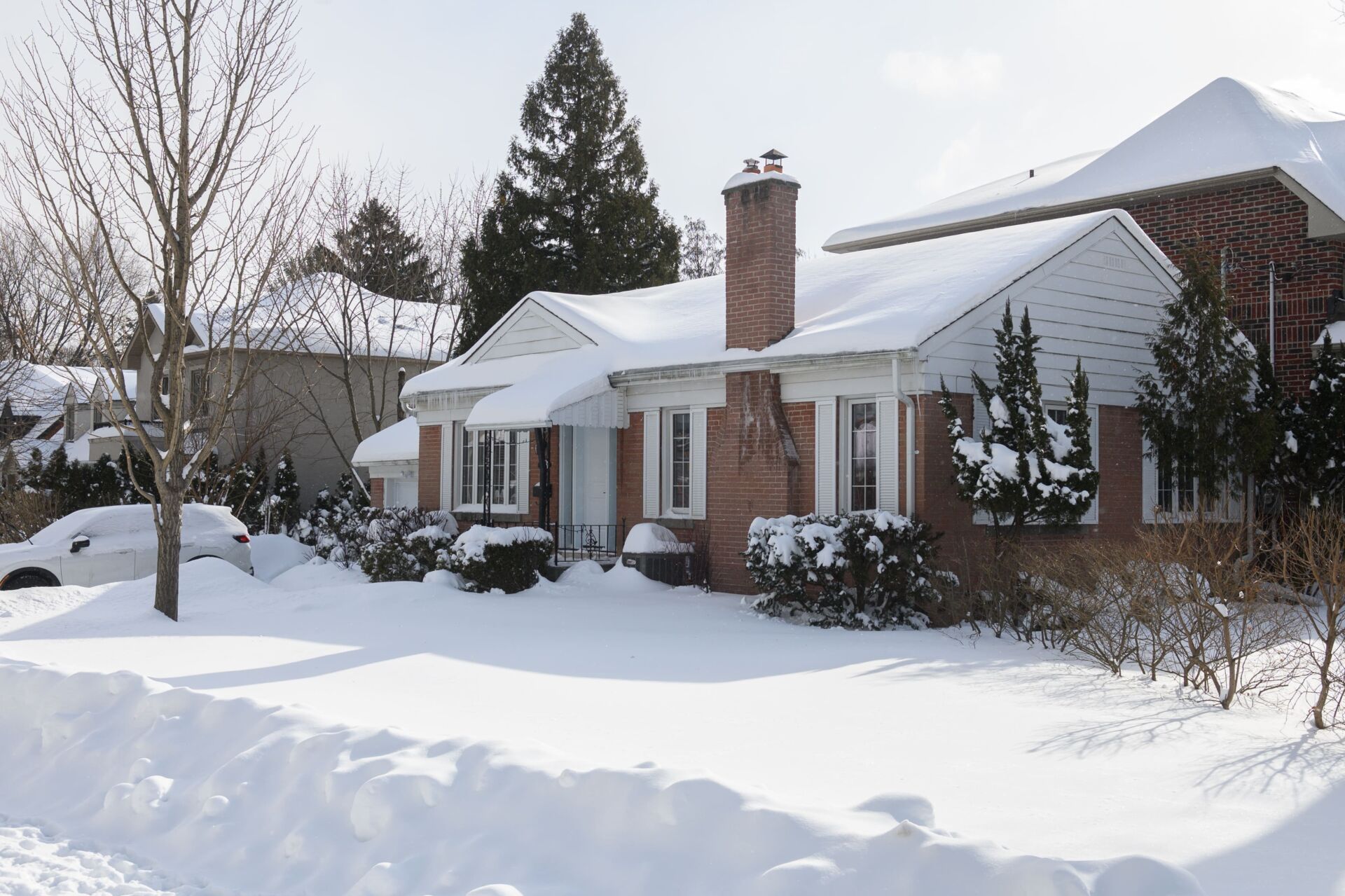As Albertans, we are used to heavy snow and cold winters. In fact, we are experts on it! We winterize everything, including our homes, to protect from the potential damage of moisture and cold and a metal roof is no exception.
Every roofing system has a system to manage moisture and snow retention, to help avoid the potential dangers that excessive snow build-up can cause. For metal roofs, snow guards are a critical component of your roofing system.
What is a metal roof snow guard?
The snow guard protects your metal roof by controlling the flow of snow, by holding it, limiting where it can build-up and controlling where melted snow will be drained. They act as blockers or corrals for snow, holding snow in place and ensuring snow and ice fall off the roof in smaller pieces.
A snow guard system will be unique to your roof and can be made of different kinds of snow guards. Most commonly, metal roof snow guards will include guards that are fastened to the roof edges, and others include triangular-shaped guards positioned strategically throughout your roofing system or bars that span the length of your roof.
Why are snow guards important for metal roofs?
Snow guards for metal roofs serve many important functions for your roof. As snow is significantly heavier than rain and can build up quickly in Calgary and Alberta winters, excessive snow build-up can lead to significant strain on your metal roof, potentially damaging the structure of your metal roof and your building. As metal roofs can also contract in cold temperatures, the excessive load bearing during the winter months should be avoided to mitigate any risks to your roof.
Although metal roofs provide significantly more protection from ice damming and moisture leakage over traditional shingle roofs, it is still a concern during winter and can help be avoided by controlling the snow on your roof.
Lastly, snow guards’ primary purpose is to prevent roof avalanches and protect you and those around your building. As the snow and ice deposited on your roof melt, the water will flow underneath the layer of snow buildup downwards. If the water flow is substantial enough, it will loosen the snow and ice from the metal roof and cause large, heavy sheets of snow or ice to fall from your roof. If the snow guards are installed correctly on your metal roof, the snow and ice will catch around the snow guards while all the water is allowed to drain freely and stop large sheets from falling off the roof.
Types of snow guards: clip-style, bar-style and fence-style
Clip-style
The most common type of snow guard, the clip (also called snow cleats or snow pads) is fastened to the metal roof by using adhesive but can also be installed by screwing the clip through the metal roof to the roof deck underneath. Clips are installed in a pattern across the roof, one at a time, and can come in many different sizes and styles depending on your needs.
Typically grouped into small profile or large profile clips, small profile clips are less than four square inches and are typically installed more densely near the bottom of the roof and less densely near the top. Their small size makes them less visible, but typically more need to be installed due to their size. This type of clip is less effective for areas with heavy snow and for steeper pitched metal roofs.
Large profile clips are more than four square inches and are a more effective barrier for ice and snow thanks to their larger size. However, they are much more visible than small profile clips.
Bar-style
The bar snow guard is a large metal bar installed horizontally across your metal roof, forming a continuous barrier for ice and snow build-up. Depending on your roof, one or more bars may be needed. The bar is attached to a bracket, which is installed on your metal roof through clamps on the side of the roof or direct installation to your roof decking system.
Fence-style
Snow fence guards are similar to bar snow guards but include two or more metal bars fastened together (like a fence), instead of one continuous bar. This may be better suited for roofs with heavier snow loads.
Professional installation of snow guards for metal roofs in Alberta
A number of factors are important when designing and installing your metal roof snow guard system, to help you ensure the longevity of your metal roof.
- Snow fall: the amount of precipitation and expected snowfall is important in considering what types and how many snow guards you need to install. How much snow does your roof typically see? How heavy is it?
- Slope: A steeper roof surface will require additional installation of snow guards
- Fastening: How your snow guards are fastened to your metal roof will determine how many are needed, and how often they will need to be replaced or repaired.
- Type of snow guard: Once you’ve identified what type(s) of snow guard you need, you’ll need to determine what size and brand will work best for your roof.
The installation will depend on your unique roofing needs, but generally snow guards are installed in multiple rows and staggered about six inches apart from each other, and six inches from the bottom and edges of the roof. This will ensure proper coverage of your metal roof to prevent large deposits of ice and snow from forming and falling off.
It is recommended that you get professional installation of your snow guards from a trusted and local professional roofer, as they have the experience necessary to safely install an effective snow guard system on your roof.If you need a snow retention system installed on your metal roof, trust the local Calgary and Edmonton professionals at A. Clark Roofing & Siding LP. With over 50 years’ experience protecting roofs from Alberta winters, we have the expertise needed for your metal roof. Contact us for a no-obligation quote today.
